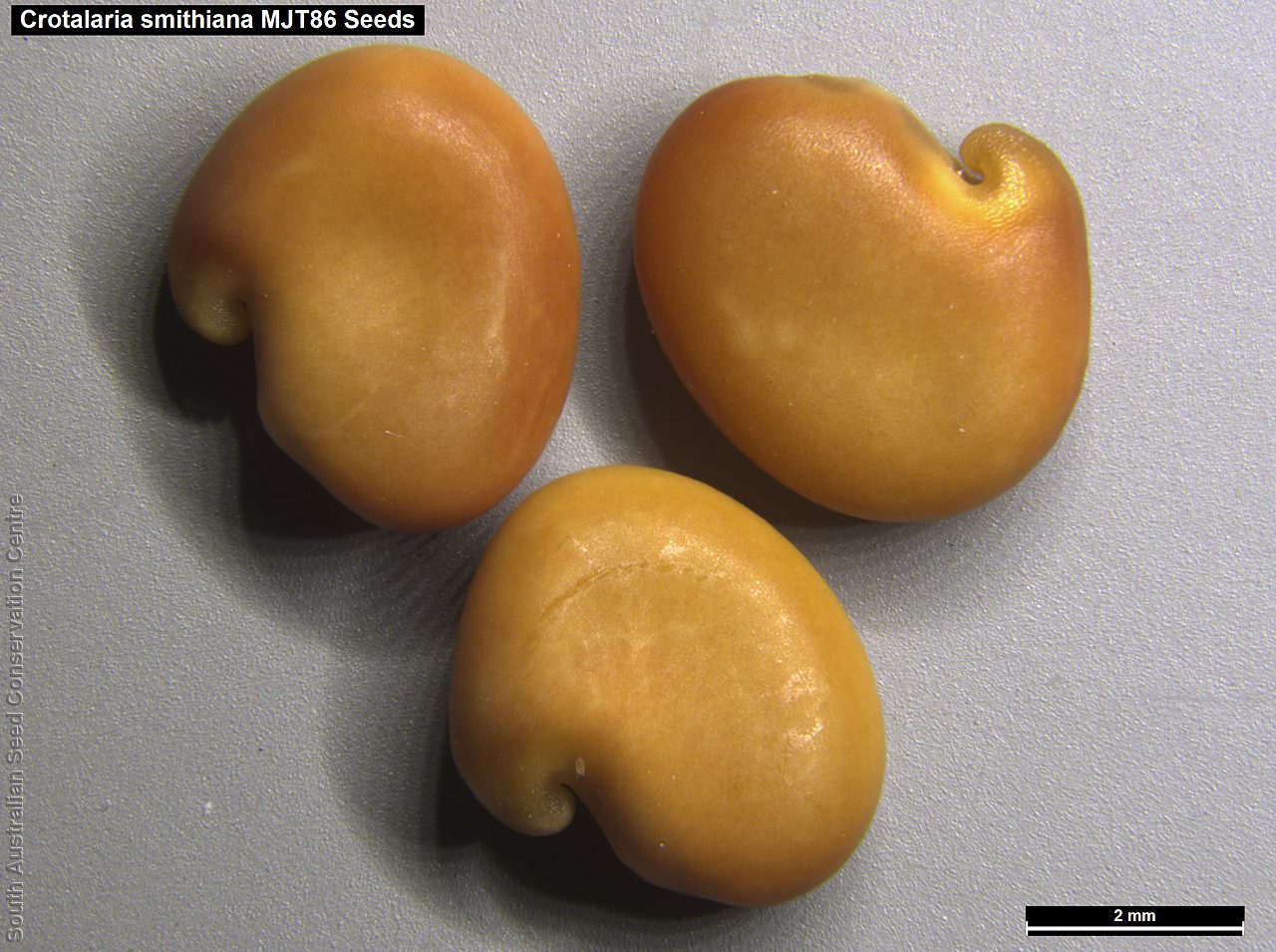














Botanical art
Prior names
Crotalaria mitchellii var. tomentosa
Crotalaria mitchellii
Common names
Yellow Rattle-pod
Low Rattle-pod
Etymology
Crotalaria from the Greek 'crotalon' meaning a rattle, castanet, referring to the sound the dried seed pods make when shaken.
Distribution and status
Found in the north-east corner of South Australia growing on sand on hills and creek beds and banks. Also found in Western Australia, Northern Territory, Queensland and New South Wales. Native. Common in South Australia. Rare in Western Australia. Uncommon in New South Wales. Common in the other States.
Herbarium region: Lake Eyre
AVH map: SA distribution map (external link)
Plant description
A soft-wooded shrub with a strong tap root; at first an erect stem, later several procumbent or ascending branches to 0.5 m long, grey or bluish-green with a spreading retrorse pilose indumentum. Leaflet elliptic to obovate, often broad to 50 mm long and 30 mm wide; densely tomentose on both sides; stipules narrow-triangular, pubescent. Flower-spike ascending or erect, terminal on the branches,;3-14 cm long with up to 40 yellow, often reddish at the centre pea-flowers. Flowering between May and November. Fruits are reddish-brown obovate-oblong pod to 20 mm long and 9 mm wide. Seeds are orange reniform seed to 4.5 mm long and 3 mm wide with a smooth surface. Seed embryo type is bent.
Seed collection and propagation
Collect seeds between September and December. Collect mature pods that are plump, turning reddish-brown and contain hard seeds. Place the pods in a tray and leave to dry for one to two weeks. Then use a rubber bung to rub the pods or break the pods open with your fingers to dislodge the seeds. Use a sieve to separate the unwanted material. Store the seeds with a desiccant such as dried silica beads or dry rice, in an air tight container in a cool and dry place. From one collection, the seed viability was high, at 90%. This species has physical dormancy that needs to be overcome for the seed to germinate (e.g. nicking or softening the seed coat).
| Location | No. of seeds (weight grams) | Number of plants | Date collected | Collection number Collection location | Date stored | % Viability | Storage temperature |
|---|---|---|---|---|---|---|---|
| BGA MSB | 1,770 (34 g) 1,800 (35 g) | 60+ | 26-Sep-2007 | MJT86 Lake Eyre | 19-Sep-2008 | 90% | -18°C |
Number of plants: This is the number of plants from which the seeds were collected.
Collection location: The Herbarium of South Australia's region name.
% Viability: Percentage of filled healthy seeds determined by a cut test or x-ray.